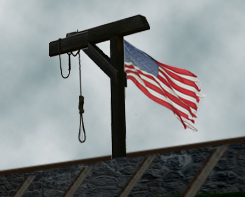The system is arbitrary, and the system just plain gets it wrong. In the three decades since the death penalty was reinstated in the U.S., more than 120 people have been released from Death Row after evidence was presented that undermined the case against them. In that time Illinois has executed 12 people--and freed 18 from Death Row.
The paper rightfully taps itself on the back for its groundbreaking exposition of the problems with the death penalty. Reporters like Maurice Possley, Steve Mills and Ken Armstrong have done an outstanding job.
Public opinion is gradually changing on the death penalty.
In a May 2006 poll, two-thirds of Americans said they supported capital punishment. But there was a significant shift when they were asked what was the best penalty for murder. On that question, 47 percent chose the death penalty and 48 percent chose life in prison without possibility of parole.
The most compelling evidence of a shift in public sentiment is that the number of death sentences handed out by judges and juries has plunged. There were 315 death sentences in 1995, but just 128 in 2005 and 102 in 2006. The number of executions has dropped nearly in half in the last eight years.
There's lots more in this editorial. I urge you all to read it. The conclusion:
The evidence of mistakes, the evidence of arbitrary decisions, the sobering knowledge that government can't provide certainty that the innocent will not be put to death--all that prompts this call for an end to capital punishment. It is time to stop killing in the people's name.
And then think, where do we go from here? The answer in my opinion is to switch to a system where the worst of the worst can get life without the possibility of parole. And where those who committed murders as teens can become eligible for parole after serving a period of years.





